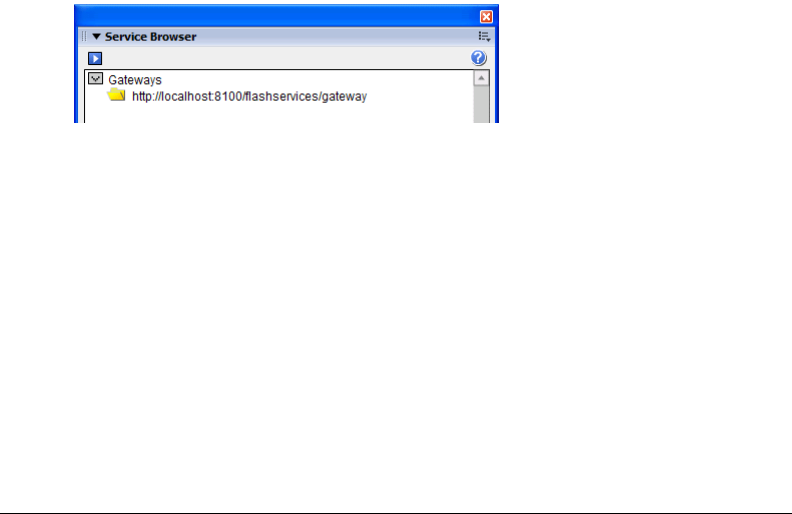User Guide
Table Of Contents
- Contents
- About Flash Remoting
- Getting Started
- Using Flash Remoting ActionScript
- Using the RemotingConnector component (Flash Professional only)
- Using Flash Remoting Data in ActionScript
- About Flash Remoting and data types
- Understanding Action Message Format
- Converting from ActionScript to application server data types
- Converting from application server data types to ActionScript
- ColdFusion to ActionScript data conversion issues
- About working with objects
- About working with RecordSet objects
- About working with XML
- The NetConnection Debugger
- Using Flash Remoting with ColdFusion MX
- Using Flash Remoting for Java
- About Flash Remoting for Java
- Calling Java classes or JavaBeans from ActionScript
- Calling Enterprise JavaBeans (EJBs) from Flash
- Calling servlets and JSPs from Flash
- Calling JMX MBeans from Flash (JRun only)
- Calling server-side ActionScript from Flash (JRun only)
- Handling function results in ActionScript
- Using Flash Remoting with JRun security
- Passing XML objects between Flash and Java
- Viewing Flash Remoting log entries
- Using Flash Remoting for Microsoft .NET
- Flash Remoting for Microsoft .NET
- Calling ASP.NET pages from Flash
- Making an ASP.NET page available to Flash Remoting
- Getting a reference to an ASPX-based service in ActionScript
- Invoking ASPX pages in ActionScript
- Using the Flash Remoting custom server control in ASPX pages
- Using the Flash Remoting namespace in code-behind files
- Using ASP.NET state management with Flash Remoting
- Using ASP.NET exception handling
- Using ADO.NET objects with Flash Remoting
- Displaying a RecordSet object in Flash with ActionScript
- Calling web services from Flash
- Calling ASP.NET assemblies from Flash
- Viewing Flash Remoting log entries
- Using NetServices and Connection Classes
- Index

110 Chapter 6: Using Flash Remoting with ColdFusion MX
To create a ColdFusion component that describes itself to the Service Browser:
1.
Edit the flashComponent.cfc file in the helloExamples directory by inserting the following
code:
<cfcomponent>
<cffunction name="getTime" access="remote" returnType="Struct"
description="Returns date">
<cfset Var tempStruct = StructNew()>
<cfset tempStruct.timeVar = DateFormat(Now ())>
<cfreturn tempStruct>
</cffunction>
<cffunction name="sayHello" access="remote" returnType="Struct"
description="Returns hello message">
<cfset Var tempStruct = StructNew()>
<cfset tempStruct.helloMessage = "Hello World">
<cfreturn tempStruct>
</cffunction>
</cfcomponent>
In this example, the description attribute of the cffunction tag supplies a short text
description of the component method.
2.
Save the file.
3.
Open the Flash authoring environment, and open the Service Browser by selecting Window >
Other Panels > Service Browser.
4.
If it is not already present, add the Flash Remoting gateway using your Flash Remoting service
URL, such as http://localhost/flashservices/gateway. Click the blue button shown in the
following image, select Add gateway from the pop-up menu, and enter the gateway in the text
box that appears.
5.
Select the gateway in the Service Browser window and, using the same menu as in step 4, select
Add service to add the flashComponent service using the service address
helloExamples.flashComponent.
6.
Click the getTime or sayHello folder; the description appears in the Service Browser.










